since I've been missing from my blog here for a number of weeks, I thought i should clear out the drafts folder, where I find this scan of a drawing by the young Hans Holbein, left over form a series of four posts I wrote on the subject of Holbein's marginal additions to The Praise of Folly by Erasmus of Rotterdam (1515)

There's a superb overview of Holbein's most important graphic works, his three treatments of the Dance of Death. But it's much more than that. It traces all the editions and copies, showing complete versions of each. This is a truly remarkable resource which can absorb the historian of graphic art for hours. For example here's an sample woodcut from each of four series out of the seventeen collected in their entirety. I've picked the fighting soldier panel in case some of my younger readers might get bored. Pretend it's a zombie wars flip-book or something:
1.Holbein, 1525:
2. Hollar, 1651:
3. Deuchar, 1788:
4: Bechstein, 1831:
A note to any of those younger readers still hanging about after the pictures finished. We're not looking at cases of artists 'ripping off' another artist. there was a time, long ago, before you were born, when if you wanted a copy of something, you couldn't just scan it. Pictures in books were printed from engraved woodblocks, which would wear out after much use. Thus fifty years later, if a reprint of the book was required, it would be necessary to hire another artist to hand-copy the whole job. And each successive artist copying the same images would be likely to add his own touches. He may also not have had access to the earliest version and have worked from an intermediary copy. It was akin to a shakespearean play, which would have to be restaged and performed anew for each generation. The linked site gives a scholarly assessment of the likely sources of each version. Regarding the panel of the soldier: "Variations: Birckmann has equipped Death with a gigantic arrow instead of a bone; Death doesn't have a shield, but grabs the soldier; Death has placed the hourglass on one of the fallen soldiers. These changes are copied by Valvasor, Hollar and Deuchar. Rubens finishes the drawing of the bone; Death raises his arm, so one can see the face; Death has a nose. These changes are copied by Mechel." The set by Rubens, one of his earliest works, I have never seen before, and in fact it was only discovered in a sketchbook in Amsterdam in the 1970s. These were discovered to be the main source-artwork for the version of the book already known to have been engraved by Mechel.
another note: the process of copying involved pencilling the image onto a woodblock which would then be engraved. In its simplest form, ie not getting into complications by using a mirror, this would leave the image reversed after printing from the block. Thus, one of the images above had to be flipped in photoshop to make it face the same way as the others.
The Holbein section is part of a bigger project of which this is the site map, Lubeck's Dance of Death, dealing with just about all the known information on the subject, of which the Holbein book is but one example. Martin Hagstrøm appears to be the author of the project, which really is colossal, and of inestimable value to anyone curious about the tradition of the Danse macabre.
Watch out for Eddie Campbell's The Dance of Lifey Death, contained in Alec: "The Years have Pants".

And click the 'alec2' label below for many more posts on the subject and excerpts from the big book. When you get to the end of that selection you'll find an 'alec1' label. Click that for more.
*************
***********

There's a superb overview of Holbein's most important graphic works, his three treatments of the Dance of Death. But it's much more than that. It traces all the editions and copies, showing complete versions of each. This is a truly remarkable resource which can absorb the historian of graphic art for hours. For example here's an sample woodcut from each of four series out of the seventeen collected in their entirety. I've picked the fighting soldier panel in case some of my younger readers might get bored. Pretend it's a zombie wars flip-book or something:
1.Holbein, 1525:

2. Hollar, 1651:

3. Deuchar, 1788:

4: Bechstein, 1831:

A note to any of those younger readers still hanging about after the pictures finished. We're not looking at cases of artists 'ripping off' another artist. there was a time, long ago, before you were born, when if you wanted a copy of something, you couldn't just scan it. Pictures in books were printed from engraved woodblocks, which would wear out after much use. Thus fifty years later, if a reprint of the book was required, it would be necessary to hire another artist to hand-copy the whole job. And each successive artist copying the same images would be likely to add his own touches. He may also not have had access to the earliest version and have worked from an intermediary copy. It was akin to a shakespearean play, which would have to be restaged and performed anew for each generation. The linked site gives a scholarly assessment of the likely sources of each version. Regarding the panel of the soldier: "Variations: Birckmann has equipped Death with a gigantic arrow instead of a bone; Death doesn't have a shield, but grabs the soldier; Death has placed the hourglass on one of the fallen soldiers. These changes are copied by Valvasor, Hollar and Deuchar. Rubens finishes the drawing of the bone; Death raises his arm, so one can see the face; Death has a nose. These changes are copied by Mechel." The set by Rubens, one of his earliest works, I have never seen before, and in fact it was only discovered in a sketchbook in Amsterdam in the 1970s. These were discovered to be the main source-artwork for the version of the book already known to have been engraved by Mechel.
another note: the process of copying involved pencilling the image onto a woodblock which would then be engraved. In its simplest form, ie not getting into complications by using a mirror, this would leave the image reversed after printing from the block. Thus, one of the images above had to be flipped in photoshop to make it face the same way as the others.
The Holbein section is part of a bigger project of which this is the site map, Lubeck's Dance of Death, dealing with just about all the known information on the subject, of which the Holbein book is but one example. Martin Hagstrøm appears to be the author of the project, which really is colossal, and of inestimable value to anyone curious about the tradition of the Danse macabre.
Watch out for Eddie Campbell's The Dance of Lifey Death, contained in Alec: "The Years have Pants".

And click the 'alec2' label below for many more posts on the subject and excerpts from the big book. When you get to the end of that selection you'll find an 'alec1' label. Click that for more.
*************
Would you pledge your soul as loan collateral?
RIGA (Reuters) – Ready to give your soul for a loan in these difficult economic times? In Latvia, where the crisis has raged more than in the rest of the European Union, you can. Such a deal is being offered by the Kontora loan company, whose public face is Viktor Mirosiichenko, 34. Clients have to sign a contract, with the words "Agreement" in bold letters at the top. The client agrees to the collateral, "that is, my immortal soul." "If they don't give it back, what can you do? They won't have a soul, that's all," he told Reuters in a basement office, with one desk, a computer and three chairs.
***********
Labels: alec2, old books (2)
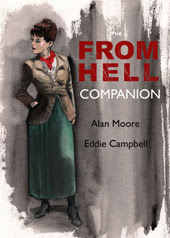


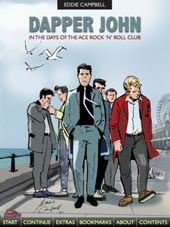
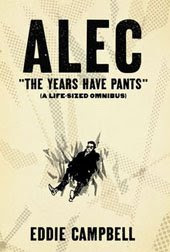
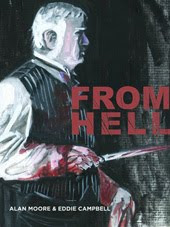

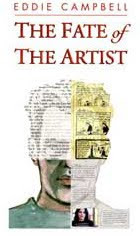
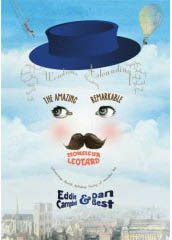





2 Comments:
That loaning technique is interesting. I wonder how many people will not return the money and walk about without a soul.
Hmmm, an example of early comics?
hahaha
(the sound of feet slapping against the floor as i run for my life, in fear of the dreaded Campbell boogie monster (known as the Campboggart) that might now be hunting me down).
Post a Comment
Subscribe to Post Comments [Atom]
<< Home